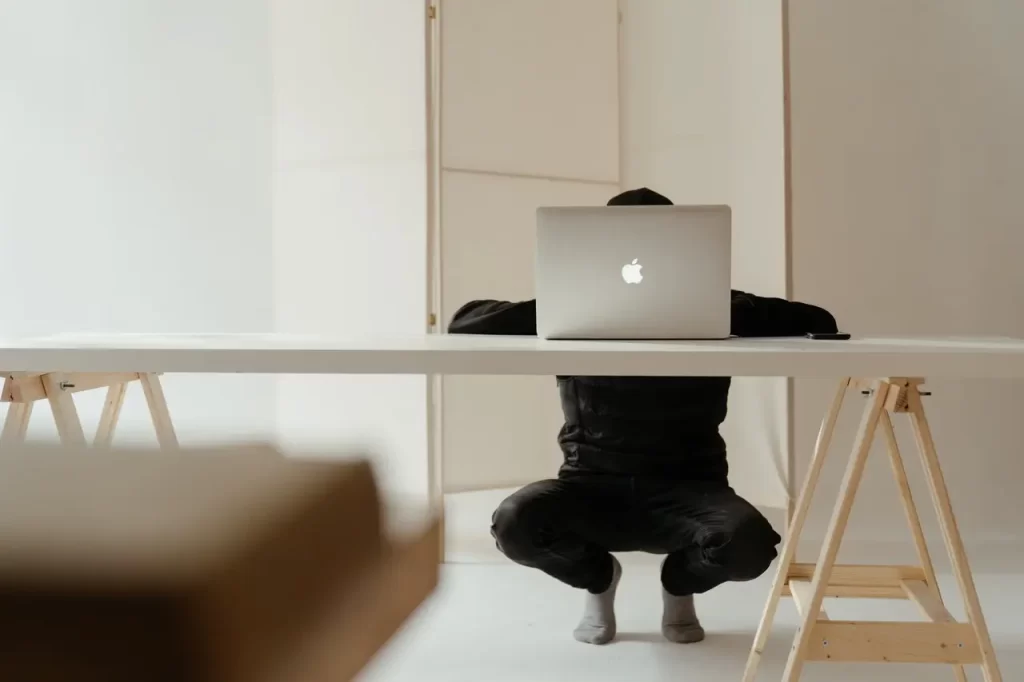
Where should you set up your home office? Your workspace should be comfortable, risk-free, and health-enabling. If the space in your home is limited or shared by family members or flatmates, you need to be smarter about where to locate your desk.
The best place to set up your home office is in a spare room, as you can fully customize the design, layout, and furniture of a spare room to your work needs. There are no conflicting uses of space unlike placing your office in a bedroom, living room, or kitchen.
But not everyone has a spare room in their apartment.
So, we look at 9 different areas within the home where you can locate your desk, the pros and cons of each, and various strategies to be more productive and less distracted.
Places to set up your home office
Before you decide on where to set up your home office, make sure you account for home office size.
What is the bare minimum that you need functionally?
What devices need to be stored on and off your desk? How many screens do you use and what are the other essential gadgets and tools?
Based on that, decide on your desk and floor space. Know these measurements before you set up your desk! Here are more nitty-gritty details to help you best figure out your home office’s spatial requirements, before you end up squeezing a desk into a closet.
Without further ado, here are 9 practical areas in a home where you can set up your home office.
1. Locate your home office in a spare room
A spare room is typically the best place for locating your home office. You can turn a spare room into a dedicated workspace that is completely optimized for your productivity. This means you have 100% control of that room for productivity, unlike your living room or bedroom.
A spare room, built for the sole purpose of working, means you do not have to compromise the space for other purposes.
You can shift in a good desk and chair, add the best lighting for productive work, and keep the room distraction-free.
Create the complete office experience, make it extra functional, or keep the space clean and minimalist – do whatever you want to.
Pros:
- Complete control over the design, layout, and furniture.
- You can place an entire office in a spare room.
Cons:
- If you are using an existing room, you may need to upgrade, declutter, or refurbish it to make it functional.
2. Have a mini office in your bedroom
Obviously, your bedroom is not ideal for a home office because you use it for sleeping. The stress from your workday could carry over into your personal life.
If you are not careful, your brain can associate the bedroom with both work and rest – which means it will be harder to switch off whenever you are not working.
Yet, a bedroom is not necessarily a bad place to locate a desk. You must keep it clean and organized, with zones delineated for different work and rest activities.
Perhaps a bedroom is all you have. Fortunately, there are ways to transform a bedroom into a bedroom office. I dive into 10 bedroom setup tips here that people often fail to consider, before they force-fit a desk into a corner of their bedroom and expect to just kick into productive gear.
Make your bedroom work-functional with better lighting and an ergonomic desk and chair. Here are some other quick ideas:
- Add both cool and warm light. This is because you need cool white light for cognitive tasks and warm yellow-orange light to wind down at night.
- Limit working on your bed. Position your desk such that you face away from the bed when seated.
- Keep it neat. Separate your clothes and personal items from work electronics and paperwork.
- Consider an L-shaped corner desk if you need a larger desk but lack the space for it. If you use multiple monitors and tech devices, an L-shaped desk can fit into a corner while providing more space for your equipment.
Important note: Ensure that every area of your home is single-use as far as possible. Even if you decide to make your bedroom your office (see how contradictory that sounds?), this doesn’t mean you completely neglect this principle. Make every furniture single-use then. I have rambled about this in other articles – but I want to emphasize that you work at your desk and sleep on your bed, not vice-versa, and avoid mixing things up.
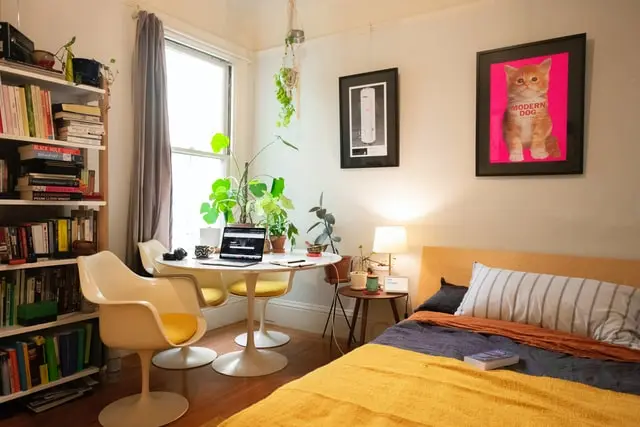
Pros:
- Control over air temperature as you work (a bedroom typically has air-conditioning)
- Contains power outlets and sockets.
Cons:
- Not a single-purpose room.
- Your available desk space may be small.
- You may need to make lighting and furniture upgrades.
- Not ideal if clients or members of your team regularly visit your office.
3. Utilize the spacious living room
A living room is not a bad option for a home office, if you have ample space and do not have family members or visitors disrupting your flow during the day.
No doubt, a living room can be easily customized into an office, provided that you mainly have couches and a TV.
Since it is typically the largest room in an apartment, it gives you plenty of available space to work with. Here are some ideas for working in the living room:
- A living room is good for placing a desk in an unused corner or against an empty wall.
- Move your sofa so that you can place a desk behind it.
- If you have a rollable side table, it would enable you to work comfortably on the couch or sofa.
- You can also work on the couch by using a laptop stand to elevate your laptop.
Of course, bear in mind that some of these ideas are best when you plan to switch locations temporarily.
Perhaps you want to locate your main desk elsewhere and switch things up by working on the couch when no family member or flatmate is around.
Pros:
- A living room is typically the largest room in the apartment – good for placing a desk in an unused corner or against an empty wall
- More space to bring in office tech and equipment
Cons:
- Lack of privacy
- Visitors and family members may disrupt your productivity
This article was originally published on unboundist.com. If it is now published on any other site, it was done without permission from the copyright owner.
4. Transform a spare corner into a home office
Any spare corner in the home is not a bad idea for some people. A desk or table can be easily placed, turning the unused corner into a functional office.
A corner office can be good for privacy and quiet. It helps if no one is home during the day so that you can work uninterrupted.
Obviously, a corner carries spatial constraints, so a multi-monitor setup may be challenging. A bulky desk may not fit into the corner. For people who need convenient access to work equipment each day (such as artists, designers, and programmers), a spare corner may be confining and bad for creativity.
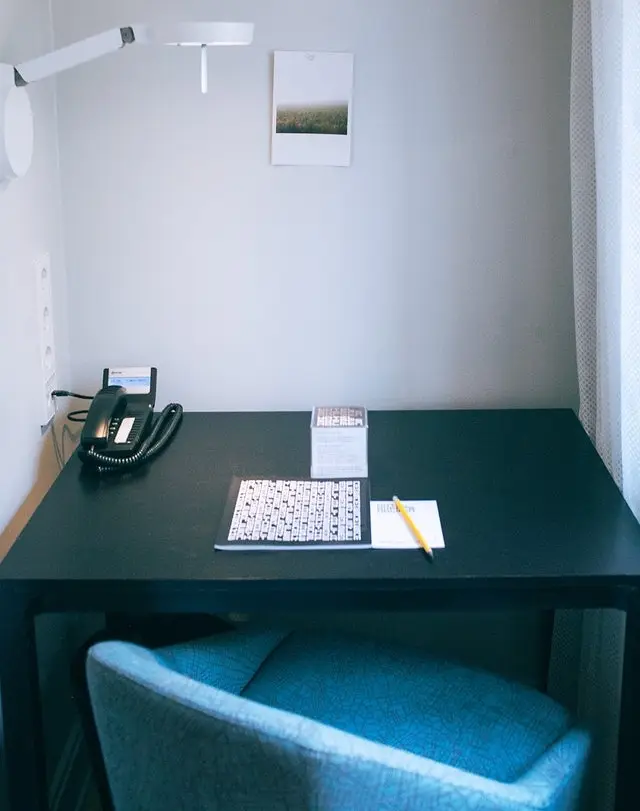
Pros:
- Space efficiency of maximizing an unused corner.
- The spare corner can be distraction-free.
Cons:
- You may not have space to fit a larger desk.
- The spare corner may not contain electrical outlets.
5. Get comfortable with a kitchen office
A kitchen office may be good if you live alone. It is also a good option during timings when other family members or roommates are not around, such as during the mornings and afternoons.
In a kitchen office, you are not far away from your afternoon coffee or tea to get through any post-lunch slump.
Kitchen offices can make good temp offices for secondary tasks — tasks that are less crucial, mission-critical, or central to your main task. If you manage complex projects or highly specialized tasks like programming, you may want to locate your home office in a distraction-free spare room where you spend most of the day. But in the afternoons, the kitchen is a good place to do other creative, secondary tasks like research, learning, ideas drafting, and so on.
However, there can be many downsides.
Consider the space that your work devices will take up and whether you have the capacity to store extra office equipment. Kitchen tables and countertops may not be suitable for multiple monitors and intense work.
Moreover, there needs to be a separate area for charging your devices, so that you do not place your laptops, power banks, and cables amongst other kitchen appliances.
Position your office away from your kitchen work zone, so as to delineate a clean, uninterrupted office zone.
Consider ergonomics. The height of your kitchen countertop or dining table may be uncomfortable for work. Therefore, you may need to move a proper work chair and desk into your kitchen.
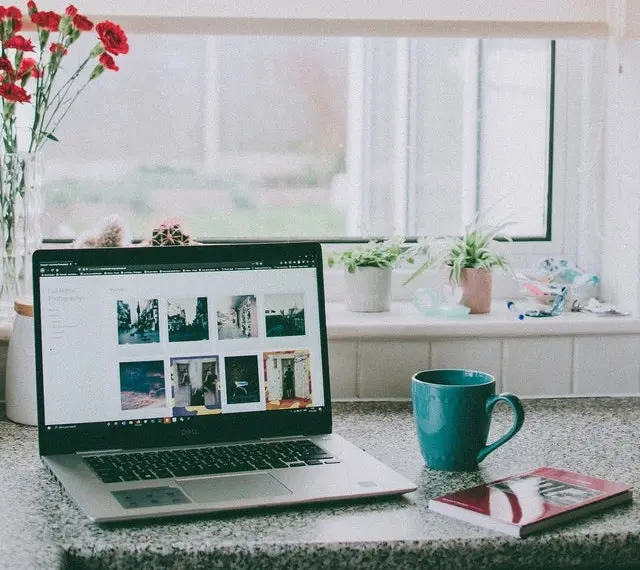
Pros:
- Can function as a second office given some makeshift arrangements.
- Central location for working and healthy snacking.
Cons:
- You might have to deal with distractions in a kitchen office (food or people).
- There may not be space to accommodate work devices and equipment.
- Bad ergonomics if kitchen furniture does not suit your work needs.
- Can potentially result in a cluttered kitchen.
6. Make the family room a productive space
A family room can be turned into a productive space. Despite the potential distractions, you will most likely be able to fit a desk and use it when no one else is around.
To get more privacy, work in a corner of the room and have your desk face away from the TV. A pair of noise-canceling headphones will come in very handy. You can also install curtains or use furniture to delineate the zones between work and socialization.
Your family members may not approve of bulky office furniture, but they may not mind plants and other deco. If you have limited storage options, use a desk with multiple drawer compartments. You can even use a wall-mounted shelf as a desk, since open shelving looks sleek and clean when the space is not being utilized.
Pros:
- Can function as a second office given some makeshift arrangements.
- Privacy is possible at certain times of the day.
Cons:
- You might have to deal with distractions (people) at times.
- There might not have space to accommodate office furniture.
7. Set up a mini office under the stairs
Creating an office under the stairs is a way to utilize every (previously unusable) area of your home. It is better if you are living alone, but privacy is otherwise possible during certain timings of the day when everyone else is not around.
The areas under the stairs tend to be dark, so you will have to invest in good lighting – you might need a few lamps and task lights.
It is a small space, so there are limits to your desk setup (especially for multiple monitors). Storage space is a potential issue. Your desk space may be small, but it would be great to position a bookshelf or some filing cabinets next to it. Since floor space is limited, floating shelves may be a good idea for extra storage and display of items.
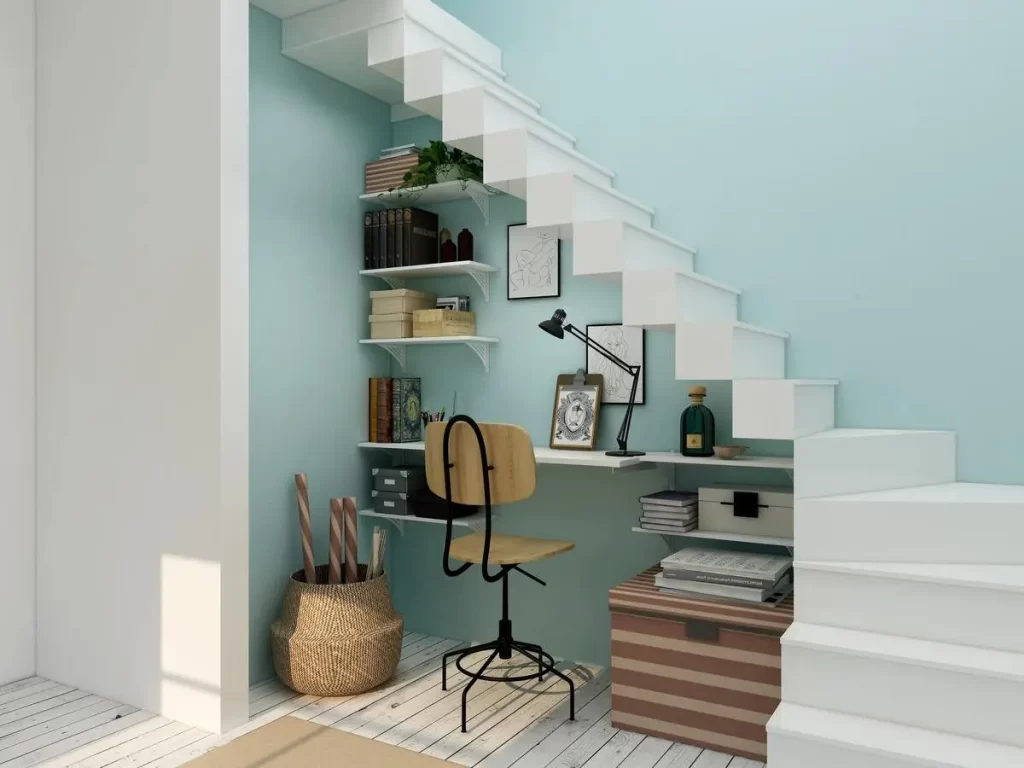
Pros:
- Can function as a second office given some makeshift arrangements.
- Privacy is possible at certain times.
Cons:
- May need to install better lighting.
- May need to deal with distractions (family members walking by).
- May not have space to accommodate office furniture.
- May not contain electrical outlets.
8. Set up a basement office
Working in your basement keeps you away from people and sounds. However, it is an area meant for storage and family use. There may be huge pieces of furniture and things lying around. The basement usually feels dark and lonely. You will likely need to install good lighting and air-conditioning or fans. If the space is uninspiring, use candles, personal souvenirs, small ornaments, and plants to give it some life.
If there is enough space, you could position a desk neatly, taking up a part of the basement. It is a shared space, so compromises may be needed as you leave other sections of the basement for your family.
Pros:
- Minimize distractions (away from people and sounds)
Cons:
- Requires installation of proper lighting
- Temperature may be not ideal
- Space may be small and cramped
9. Hide your office in your closet
The last option is to fit a desk in a closet – you can do so if your setup is minimalist and you make a few measurements. You can even add shelving to your closet which will serve as your new desk. The shelves will also store your essential desk items.
Consider these questions:
- Is your closet wide enough for your work equipment? If you are using two monitors and an iPad for work, there is no use cramming them onto a small desk tucked away in a closet. You need more space for good ergonomics.
- Is your closet deep enough for a desk? Place your work devices on the floor of your closet, and place them as far back as you need your devices to go.
- Measure the height of your desk. How high does your desk need to be? Sit on your office chair and determine the height that is best for typing comfortably on your keyboard without strain.
- Measure the vertical height between shelves. If you have multiple shelves, make sure they are spaced far enough to accommodate the height of your monitor or laptop.
- Remove doors or close them. If you keep the doors, you can literally close your closet office at the end of the day. If the doors are getting in the way, remove them.
Pros:
- Space efficiency of maximizing a closet.
- Good for privacy.
- A closet desk can be distraction-free, given you may not fit too many things in it.
- Good as a second office.
Cons:
- Space may be small and cramped.
- Lack of electrical outlets; may require the services of an electrician for provision of wall sockets and plugs.
- Requires use of proper lighting.
Summary
To summarize, using a spare room will give you the most control over your productive workspace. Your living room or bedroom would usually be the second-best option.
Even if you live in a small apartment and cannot abide by the single-use principle, make every piece of furniture as single-use as you can.
Work at your dedicated desk, watch TV where you normally sit on the couch, eat in your kitchen where you normally eat (other than your customized ergonomic corner), and knock out on your bed like a baby with no laptop near you.
Lastly, remember: your home office should have a good desk and chair, good lighting, temperature controls, and a distraction-free environment. Good to-have items are electrical outlets, a single-use room, and a large spatial area.